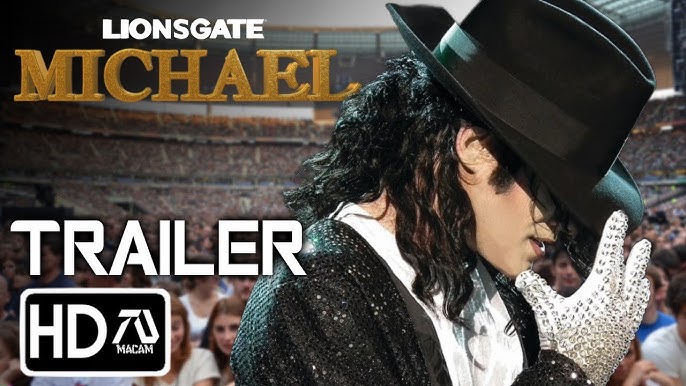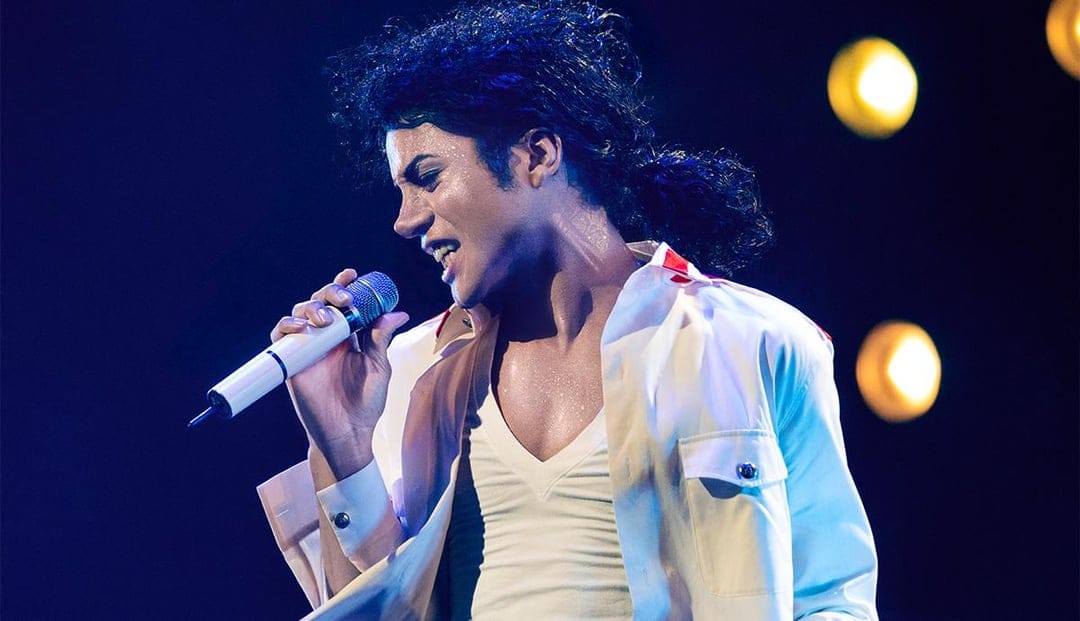Michael Jackson Biopic, Legacy, Controversy, and the Quest for the Man Behind the Myth

Keywords: Michael Jackson Biopic Explained, Jaafar Jackson Michael Movie, Michael Film Plot Summary, King of Pop Legacy, Joe Jackson Colman Domingo, Michael Movie Controversy, Thriller Bad Era Explained, Antoine Fuqua Michael, Jackson 5 Motown Years
The announcement and subsequent production of Michael, the highly anticipated biopic chronicling the life of the King of Pop, Michael Jackson, has been a cultural lightning rod. Directed by Antoine Fuqua (Training Day) and written by Oscar-nominated John Logan (Skyfall), the film is poised to be one of the most significant, spectacular, and controversial cinematic events of the decade. Starring Michael’s own nephew, Jaafar Jackson, the film has an unprecedented mandate: to celebrate the most successful artist of all time while navigating the unprecedented scrutiny and trauma that defined his adult life.
Lionsgate has promised a film that delivers on the epic scale of Michael’s artistry—from his debut with the Jackson 5 to his reign over pop culture in the 1980s—while offering an “honest portrayal” of the man behind the mask. The challenge inherent in this promise, particularly given the backing of the Jackson Estate, forms the thematic and critical core of the project.
This exhaustive 3000-word explanation will analyze the announced plot and thematic structure of Michael across four definitive phases. We will dissect the emotional and psychological warfare of his childhood, analyze the revolutionary artistry of the Thriller and Bad eras, explore the unprecedented casting choices, and provide an in-depth context for the controversy that the film must address to be considered a complete biographical work.
I. Phase One: The Brutal Genesis of Genius (The Jackson 5 Years)
The opening act of Michael must establish the foundation of his genius and the psychological crucible that forged it. This is the story of Joseph and Katherine Jackson’s son, Michael, the reluctant child prodigy from Gary, Indiana.
A. Gary, Indiana: The Industrial Crucible

The film will begin by painting a clear picture of the Jackson family’s humble origins in Gary, Indiana. The setting is crucial, as it provides the stark contrast to the global stardom that follows. The poverty and working-class environment underscore the urgency and necessity of the Jackson 5’s success.
- The Family Unit: The early scenes will showcase the raw, untapped talent within the Jackson family, particularly the sibling dynamic before the intensity of stardom took hold. Marlon, Tito, Jackie, Jermaine, and the small, preternaturally gifted Michael are shown rehearsing endlessly.
- The Discovery: The narrative traces the pivotal moment of discovery, often attributed to the Jacksons’ early manager, who recognized the spark that Michael possessed—a vocal power and stage presence far exceeding his age.
B. Joe Jackson: The Forging of a Star
The film’s most critical early relationship is that between Michael and his father, Joe Jackson (played by the formidable Colman Domingo). This relationship is the primary source of Michael’s later emotional complexity.
- The Necessity of Discipline: The film must confront the widely documented fact that Joe Jackson used severe, often abusive, discipline to mold his children into stars. Domingo’s portrayal will likely capture the ambivalence of Joe: the necessary cruelty and demanding schedule that resulted in the greatest entertainment act of its time, set against the emotional scars it left on his son.
- The Loss of Childhood: The narrative will use the Jackson 5’s success at Motown to illustrate the abrupt end of Michael’s childhood. Early Motown hits like “I Want You Back” and “ABC” are framed by relentless touring, recording, and the loss of normalcy. The transition from playful, youthful performers to tightly controlled, professional machines is the core tragedy of this period.
- The Artistic Split: This phase culminates with Michael’s growing artistic restlessness. He begins to feel constrained by the familial structure and the “Motown Sound.” His increasing desire for creative control and personal identity fuels the move toward his solo career.
II. Phase Two: The Creative Emancipation and Self-Definition (Off the Wall to Thriller)
This phase charts Michael’s revolutionary move away from the Jackson family unit and into the stratosphere of adult pop artistry. It is the story of ambition meeting genius.
A. The Quest for Independence and the Off the Wall Triumph

Michael’s 1979 album, Off the Wall, is the declaration of his independence. The film will depict this as a moment of artistic and personal liberation.
- The Quincy Jones Partnership: A significant portion of this act will be dedicated to the transformative professional bond between Michael and producer Quincy Jones (played by Kendrick Sampson). The film should showcase their collaborative energy, with Jones providing the technical expertise to translate Michael’s innovative ideas into sound.
- A New Sound, A New Look: The focus here shifts to Michael’s early development of his solo aesthetic—the sequined socks, the glove, the hat. The music videos for hits like “Don’t Stop ‘Til You Get Enough” and “Rock with You” demonstrate his emerging cinematic flair and sophisticated dance style, fully breaking from the choreographed precision of the Jackson 5.
B. The Global Earthquake: The Making of Thriller
The film treats the Thriller album (1982) as the undeniable cultural singularity that it was. This section requires massive scale and meticulous reconstruction.
- The Pressure to Perform: The narrative tension lies in the challenge of following up the critical success of Off the Wall. Thriller was designed to be an event, and the film must convey the immense pressure Michael placed on himself.
- The Music Video Revolution: The core cinematic set piece here is the creation of the “Thriller” music video. The film will show Michael’s groundbreaking vision to turn a music video into a feature-length cinematic short film, complete with Hollywood director John Landis and unprecedented budgets. This sequence illustrates Michael’s understanding of media and his use of video to solidify his artistic vision.
- Breaking Barriers: The film should address the vital role of Thriller in breaking racial barriers on MTV and defining the visual landscape of the 1980s. Michael Jackson became an artist whose influence was truly colorblind and global.
III. Phase Three: The Reign, Scrutiny, and Isolation (Bad and Beyond)
As Michael’s stardom reaches its absolute zenith, the film shifts its focus from creative triumph to the psychological burden and the growing divide between the public icon and the private man.
A. The Pursuit of Perfection and The Man in the Mirror
The Bad era (1987) represents Michael at his most creatively demanding and financially successful, but also his most isolated.
- Ultimate Control: Michael’s desire to outperform Thriller drove the production of Bad. The film will showcase Michael taking almost total creative control, co-writing and producing nearly every track. The meticulous detail in the Bad short film, directed by Martin Scorsese, highlights his relentless perfectionism and his increasing demands on those around him.
- The Physical Transformation and Media Scrutiny: This period is when the intense scrutiny of Michael’s physical appearance—his skin color, facial structure, and weight—becomes relentless. The film must explore how the media fixated on his changes, fostering the sensationalism that would define his later career. This scrutiny forces Michael to retreat further from the public eye.
- The Elephant Man and Neverland: The film is expected to explore the iconic, highly publicized eccentricities: his purchase of the rights to the Elephant Man remains, and his creation of the Neverland Ranch—a deliberate attempt to construct the childhood and sanctuary he never had.
B. The Wall of Fame and the Shadow of Scrutiny
The film’s exploration of this period must address the burgeoning controversy that began to overshadow his artistry.
- The Business Empire (John Branca): The introduction of figures like his long-time lawyer and manager, John Branca (played by Miles Teller), emphasizes the massive financial engine behind the performer. The purchase of the ATV Music catalog (The Beatles’ publishing rights) is a monumental moment of business acumen, proving Michael’s genius extended far beyond the stage.
- The Media Feeding Frenzy: The narrative must depict the shift in public perception, from adoration to suspicion. The film will show the increasing intensity of tabloid culture and the relentless invasion of his privacy, establishing the context for his deeply protective, reclusive behavior.
IV. Phase Four: The Unspoken Tragedies and Enduring Legacy
The film’s greatest challenge lies in its conclusion. To be a truly “honest” portrayal, it must grapple with the legal and personal issues that defined his final two decades.
A. The Legal Storms and The Jackson Estate’s Narrative
The film is mandated to portray Michael as innocent, reflecting the Estate’s position and the verdict of the 2005 trial, but it cannot ignore the storm itself.
- The 1993 and 2005 Allegations: The film will likely address these events by focusing on the psychological impact of being accused, tried, and acquitted in the court of public opinion. The emphasis will be on the betrayal, the media circus, and the crippling legal and emotional cost rather than dramatizing the unproven claims. This is the delicate balancing act where the film risks alienating critics who demand full acknowledgment of the victims’ perspectives.
- The Painkiller Addiction: The film is expected to explore Michael’s growing reliance on prescription medication, initially stemming from the physical demands of his intense choreography and a severe burn injury from a Pepsi commercial shoot. The depiction of his addiction is crucial to understanding the underlying factors in his later instability and eventual death.
B. The Final Act: The “This Is It” Context
The film will likely conclude with a thematic affirmation of his artistry, leaving the audience with the enduring image of the performer.
- The Return to the Stage: The film should reference the planning and rehearsal for the “This Is It” concert series, which were to be his grand return to the stage. This provides a narrative loop: the film began with a child who loved to perform, and it ends with a man trying to reconnect with that pure, driving love of the craft.
- The Enduring Power: The film will ultimately seek to prove that Michael Jackson’s greatest legacy is his music and his performance. The final image of Jaafar Jackson embodying the icon on stage serves as the final, emotional plea: Judge the man by his art, which remains unparalleled. The final scene will likely be a powerful, cathartic performance that reminds the audience why he was, and remains, the King of Pop.
V. SEO Power-Up: The Cultural Necessity of Michael
The sheer SEO value of Michael is driven by its cultural necessity and the deep divisions in public opinion it addresses.
- Global Relevance: Michael Jackson remains one of the most searched-for figures globally, ensuring high traffic for any content related to his life and career.
- Controversy and Debate: The promise of an “honest” portrayal, juxtaposed against the Estate’s involvement, ensures constant critical discourse and drives high-intent search queries like “Michael Movie Controversy” and “Michael Jackson Biopic Truth.”
- Casting Spectacle: The casting of his nephew, Jaafar Jackson, creates an immediate, highly searched hook, tying the production directly to the Jackson family. The focus on his physical transformation and performance is a guaranteed traffic generator.
Michael is a story of myth-making and myth-breaking. It is the story of a child who became a god, and the tragedy of the man who struggled to live inside the god’s skin. The film will be defined not just by what it shows, but by what it chooses to leave out, yet its status as the definitive, authorized cinematic account ensures its permanent place in pop culture history.
